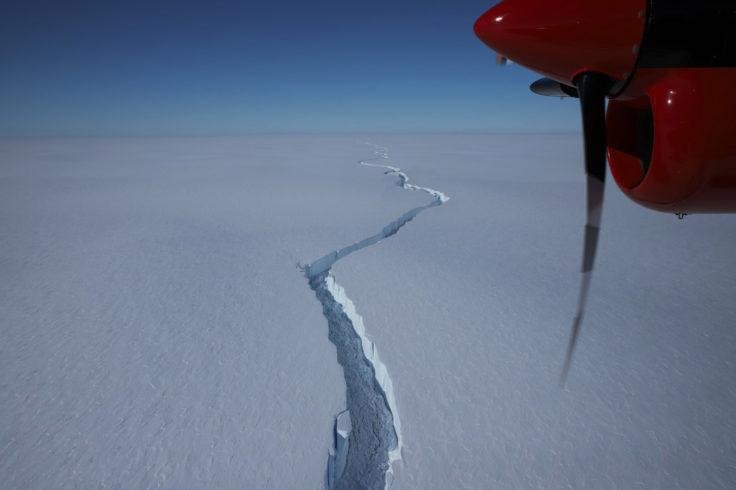THE IDES OF MARCH
Why QAnon are pinning their last desperate hopes on Trump emerging as president on March 4
JOSHUA ZITSERFEB 27, 2021,  \
\ John Rudoff/Anadolu Agency via Getty ImagesSome QAnon conspiracy theorists believe that former President Donald Trump will be sworn in on March 4, 2021.
QAnon followers believe that Trump will be reinstated as president on March 4, 2021.
The conspiracy theory is rooted in the discredited beliefs of the sovereign citizen movement.
It has gained popularity with QAnon followers after being circulated on Telegram and Gab.
QAnon followers, unable to cope with Joe Biden’s elevation to president in January, have now coopted a new belief to argue that the next legitimate inauguration date will be on March 4.
After President Joe Biden’s inauguration on January 20, 2021, some QAnon believers concluded that their conspiracy theory was a “lie.” But its most fervent followers weren’t ready to give up on their conspiratorial beliefs, clinging to an absurd hope that former President Donald Trump will be sworn in at a later date.
Using ever-shifting goalposts, the pro-Trump conspiracists have now set their eyes on March 4, 2021.
Where does the conspiracy theory come from?
The belief that Trump will be sworn in on March 4 is rooted in theories promoted by the obscure sovereign citizen movement.
The sovereign citizen movement is a highly-fragmented grouping of Americans who believe taxes, US currency, and even the US government to be illegitimate.
A minority of them believe that laws do not apply to them at all, resulting in the FBI designating some members as “domestic terrorists” and “anti-government extremists.”
A central tenet of the movement is that the 14th Amendment, ratified in 1868, converted “sovereign citizens” into “federal citizens.”
This belief also goes so far as to dismiss the validity of any presidency after 1868, making Ulysses S. Grant the last valid president.
The ideas are esoteric and, arguably, nonsensical.
“You really feel like you’re in an Alice in Wonderland world when you start going through the ideas of the sovereign citizens,” Michael Barkun, professor emeritus of political science at Syracuse University, told Insider. “It’s like you’ve gone down some kind of rabbit hole into a parallel universe.”
Some sovereign citizens also believe that an obscure law from 1871 reveals that the US has become a corporation.
The District of Columbia Organic Act established a single municipal government for Washington, DC. The use of the word “corporation,” referring to an incorporated district, has led to the mistaken interpretation of this to mean that the entirety of the US became a business.
“Some believe that President Joe Biden is the executive of a bankrupt corporation – the United States Inc.,” said Travis View, conspiracy theory expert and host of the QAnon Anonymous podcast.
Creating an alternate reality based on a misinterpretation of a minor detail in an old law is typical of conspiracy groups, Media Matter’s deputy research director Stefanie Le told Insider.
“They can create elaborate mythologies based on the smallest and least significant details,” she said.
Why March 4?
Before the 20th Amendment in 1933, all presidents were sworn in on March 4.
It was introduced to shorten the “lame duck” period between elections and the start of new administrations.
Given that followers of the sovereign citizen movement reject all constitutional amendments passed after the 14th amendment, they do not view this date change as legitimate.
QAnon followers, who failed to see Trump inaugurated in January, have recycled the argument and reinvented the next legitimate inauguration date.
They say that on March 4, 2021, Trump will succeed the last legitimate president, Grant, to become the 19th president.

AP Images
Believers of the March 4 conspiracy think that former President Donald Trump will succeed former President Ulysses S. Grant as the 19th president of the US.
Le told Insider: “Now that one of their most highly-anticipated events – the January 20 inauguration – has failed to come true, they’re grasping for explanations from other conspiracy theories.”
View said that there is no clear logic to it besides the blind faith that Donald Trump is the chosen one to save humanity.
Andrew Harnick/AP PhotoJoe Biden is sworn in as the 46th president of the United States by Chief Justice John Roberts as Jill Biden holds the Bible during the 59th Presidential Inauguration at the U.S. Capitol in Washington, Wednesday, January 20, 2021.
‘Maybe we should gather again and storm the Capitol on March 4’
Adopting conspiracy theories from other groups to contribute to a specific, imaginary narrative isn’t unexpected.
It’s QAnon’s survival method “because their own predictions have fallen apart,” said Le.
The forums populated by QAnon adherents are now buzzing with chatter about March 4.
Telegram and Gab have led the way according to research by Media Matters seen by Insider, and it is widely circulating on 4Chan and right-wing forum Patriots.win, the researchers said. The rumors have also reached TikTok, reported the Independent.
There have been real-world consequences to the March 4 rumor-mill.
Notably, Trump’s DC hotel has hiked prices for March 3 and March 4. It is the only luxury hotel in the area to increase its rates for those nights.
The US Capitol Police, fearing potentially violent clashes, have ordered almost 5,000 National Guard troops to remain stationed in Washington, DC, on March 4.Brandon Bell/Getty Images
National Guard troops are expected to stay in Washington, DC, until mid-March.
Rep. Adam Smith, chairman of the House Armed Services Committee, referred to the conspiracy theory during a hearing on the matter.
“Some of these people have figured out that apparently 75 years ago, the president used to be inaugurated on March 4,” he said. “OK, now why that’s relevant? God knows. At any rate, now they are thinking, ‘maybe we should gather again and storm the Capitol on March 4’ … that is circulating online.”
A HASC Democratic spokesperson told Insider that Smith had seen the reports identifying March 4 as “another inflection point” in the capital.
“The House Armed Services Committee’s role is to validate that military personnel are used in accordance with their aligned task and requirements,” the spokesperson said.
Will QAnon ever give up?
Security is also expected to be high throughout March to anticipate the still-unscheduled State of the Union address.
The Capitol Police plans to maintain an elevated presence due to intelligence suggesting that extremists have discussed plans to attack the Capitol building during the speech, Politico reported.
Experts, however, don’t expect the insurrectionist violence of January 6 to be replicated on March 4.
Barkun, who previously advised the FBI on security threats posed by extremist groups, said he is confident that sufficient attention is being paid to QAnon’s activities.
View also doubts that there will be widespread violence. “I think the events of January 6 spooked a lot of Q followers,” he told Insider.
But none of the experts Insider spoke to believe QAnon is going away any time soon. It is commonplace for conspiracy theory groups to deal with incorrect predictions by just kicking the can down the road.
“They will construct more and more complex rationalizations that push the events that they wish for farther and farther into the future,” Barkun told Insider.










